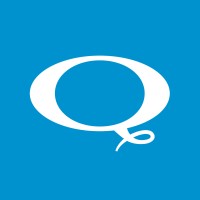
Les Éleveurs de porcs du Québec Company Cyber Security Posture
leseleveursdeporcsduquebec.comDepuis 1966, nous sommes au service des éleveurs de porcs du Québec, en collaboration avec les acteurs de la filière porcine et de la communauté. Les Éleveurs de porcs du Québec représentent les intérêts de leurs 2 537 membres, répartis dans huit groupes régionaux. Le secteur porcin génère des retombées économiques de plus de 3,7 milliards de dollars, dont bénéficient toutes les régions de la province. Au Québec, la filière porcine emploie 38 000 personnes. 80% de la demande québécoise en viande de porc est répondue par l'élevage québécois. Notre mission est de représenter et promouvoir les intérêts des éleveurs et éleveuses de porcs du Québec et de les rendre fiers en valorisant leur profession et leur produit. Nous veillons également à ce que les conditions de marché et d’élevage permettent d’assurer la prospérité et la pérennité des entreprises porcines québécoises.
LÉDPDQ Company Details
eleveurs-de-porcs-du-quebec
43 employees
709
111
Farming
leseleveursdeporcsduquebec.com
Scan still pending
LES_2734236
In-progress
Between 900 and 1000
This score is AI-generated and less favored by cyber insurers, who prefer the TPRM score.
 LÉDPDQ Global Score
LÉDPDQ Global Score.png)

Les Éleveurs de porcs du Québec Company Scoring based on AI Models
| Model Name | Date | Description | Current Score Difference | Score |
|---|---|---|---|---|
| AVERAGE-Industry | 03-12-2025 | This score represents the average cybersecurity rating of companies already scanned within the same industry. It provides a benchmark to compare an individual company's security posture against its industry peers. | N/A | Between 900 and 1000 |
Les Éleveurs de porcs du Québec Company Cyber Security News & History
| Entity | Type | Severity | Impact | Seen | Url ID | Details | View |
|---|---|---|---|---|---|---|---|
| Les Éleveurs de porcs du Québec | Breach | 100 | 5 | 11/2023 | LES12815124 | Link | |
Rankiteo Explanation : Attack threatening the organization’s existenceDescription: Les Éleveurs de porcs du Québec was the target of a cybersecurity attack that might have led to the compromise of some of their systems' data by an unauthorised third party. Every system, including those used by carriers, slaughterhouses, and breeders, is unavailable. On the association's website, the most recent communication they received was on October 24, informing them of a significant computer malfunction. The group claims to have alerted those who might be impacted by the disclosure of private information and launched an investigation into the event. | |||||||
Les Éleveurs de porcs du Québec Company Subsidiaries

Depuis 1966, nous sommes au service des éleveurs de porcs du Québec, en collaboration avec les acteurs de la filière porcine et de la communauté. Les Éleveurs de porcs du Québec représentent les intérêts de leurs 2 537 membres, répartis dans huit groupes régionaux. Le secteur porcin génère des retombées économiques de plus de 3,7 milliards de dollars, dont bénéficient toutes les régions de la province. Au Québec, la filière porcine emploie 38 000 personnes. 80% de la demande québécoise en viande de porc est répondue par l'élevage québécois. Notre mission est de représenter et promouvoir les intérêts des éleveurs et éleveuses de porcs du Québec et de les rendre fiers en valorisant leur profession et leur produit. Nous veillons également à ce que les conditions de marché et d’élevage permettent d’assurer la prospérité et la pérennité des entreprises porcines québécoises.
Access Data Using Our API

Get company history
.png)
LÉDPDQ Cyber Security News
Potech Showcases Darkivore - the Cybersecurity Platform - at Edunet 2025
The event, focused on technology in education, brought together school leaders, IT managers, and educators from public and private schools ...
A Trio of US Treasury Hacks Exposes a Pattern Making Banks Nervous
In three major hacks, Treasury didn't deploy cybersecurity measures that could have prevented the attacks or flagged the intruders sooner, ...
Cybersecurity Threat in the Age of AI: BCF Founder Cordell Robinson Urges a Culture Shift Toward Proactive Protection
“The biggest cyber threat today isn't machine learning; it's the culture of instant gratification that drives human behavior online,” says this ...
Hong Kong needs more cybersecurity professionals as threats increase: report
Hong Kong needs more professionals focused on cybersecurity due to persistent threats and a limited talent pool, according to a recent ...
Why Teachers Need to Take Cybersecurity Seriously
We have to worry about protecting student privacy, keeping them safe in the online space and making sure that we're providing opportunities for ...
Cybersecurity jobs available right now: July 1, 2025
Here are the worldwide cybersecurity job openings available as of July 1, 2025, including on-site, hybrid, and remote roles.
GAO Recommends Full Implementation of Risk Management Processes at NASA
NASA is planning to invest $80 billion in developing spacecraft and systems for exploring the Earth, the moon and the solar system.
Resecurity Appoints Luiz Cota as Territory Manager for Brazil
None
Cybersecurity unicorn Cato Networks snags $359m, soaring to $4.8 billion valuation
Cato Networks, a maker of cloud-based, secured networks for large enterprises that lets remote workers connect to applications regardless of ...

LÉDPDQ Similar Companies

Massey Ferguson
Massey Ferguson With more than 175 years of innovation and experience, Massey Ferguson is one of the world’s leading tractor brands and a force in the global harvesting business. Here you can find out more about Massey Ferguson a global manufacturer of agricultural machinery equipment, providing h

Best Agro International
BEST AGRO INTERNATIONAL sebagai salah satu perusahaan perkebunan kelapa sawit yang berkembang pesat di Indonesia, telah memulai kontribusinya di bidang usaha perkebunan kelapa sawit sejak tahun 1995. Melalui visinya "MAJU DAN SEJAHTERA BERSAMA" serta misi "MENJADI PERUSAHAAN PERKEBUNAN KELAPA SA
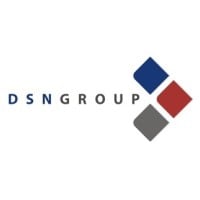
PT Dharma Satya Nusantara Tbk
PT Dharma Satya Nusantara Tbk (DSN Group) was established on September 29, 1980. DSN Group is engaged in the palm oil industry and wood products. Currently, the Company has oil palm plantations which located in East, Central and West Kalimantan. In the wood product industry, the Company has a wood-p
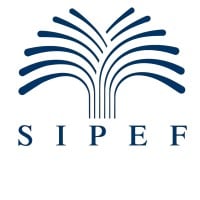
SIPEF
SIPEF is a Belgian agribusiness group listed on Euronext Brussels and specialised in 100% sustainable certified production of crude palm oil, rubber, tea and bananas. These labour-intensive activities are consolidated in Indonesia, Papua New Guinea and Côte d’Ivoire, and are characterised by broad s
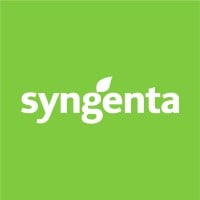
Syngenta
Syngenta is one of the world’s leading agriculture companies. Our ambition is to help safely feed the world while taking care of the planet. We aim to improve the sustainability, quality and safety of agriculture with world class science and innovative crop solutions. Our technologies enable millio
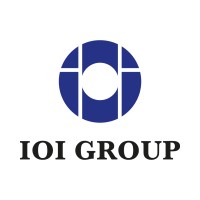
IOI Corporation Berhad
𝙸𝙾𝙸 Corporation Berhad is one of the leading global integrated and sustainable palm oil players. We are listed on the Main Market of Bursa Malaysia Securities Berhad and trading as MYX: 1961. Our plantation business covers Malaysia and Indonesia, and we currently have 98 estates, 15 palm oil mills

Frequently Asked Questions (FAQ) on Cybersecurity Incidents
LÉDPDQ CyberSecurity History Information
Total Incidents: According to Rankiteo, LÉDPDQ has faced 1 incidents in the past.
Incident Types: The types of cybersecurity incidents that have occurred include ['Breach'].
Total Financial Loss: The total financial loss from these incidents is estimated to be {total_financial_loss}.
Cybersecurity Posture: The company's overall cybersecurity posture is described as Depuis 1966, nous sommes au service des éleveurs de porcs du Québec, en collaboration avec les acteurs de la filière porcine et de la communauté. Les Éleveurs de porcs du Québec représentent les intérêts de leurs 2 537 membres, répartis dans huit groupes régionaux. Le secteur porcin génère des retombées économiques de plus de 3,7 milliards de dollars, dont bénéficient toutes les régions de la province. Au Québec, la filière porcine emploie 38 000 personnes. 80% de la demande québécoise en viande de porc est répondue par l'élevage québécois. Notre mission est de représenter et promouvoir les intérêts des éleveurs et éleveuses de porcs du Québec et de les rendre fiers en valorisant leur profession et leur produit. Nous veillons également à ce que les conditions de marché et d’élevage permettent d’assurer la prospérité et la pérennité des entreprises porcines québécoises..
Detection and Response: The company detects and responds to cybersecurity incidents through {description_of_detection_and_response_process}.
Incident Details
Incident 1: Ransomware Attack
Title: {Incident_Title}
Description: {Brief_description_of_the_incident}
Date Detected: {Detection_Date}
Date Publicly Disclosed: {Disclosure_Date}
Date Resolved: {Resolution_Date}
Type: {Type_of_Attack}
Attack Vector: {Attack_Vector}
Vulnerability Exploited: {Vulnerability}
Threat Actor: {Threat_Actor}
Motivation: {Motivation}
Incident 2: Data Breach
Title: {Incident_Title}
Description: {Brief_description_of_the_incident}
Date Detected: {Detection_Date}
Date Publicly Disclosed: {Disclosure_Date}
Date Resolved: {Resolution_Date}
Type: {Type_of_Attack}
Attack Vector: {Attack_Vector}
Vulnerability Exploited: {Vulnerability}
Threat Actor: {Threat_Actor}
Motivation: {Motivation}
Common Attack Types: As of now, the company has not encountered any reported incidents involving common cyberattacks.
Identification of Attack Vectors: The company identifies the attack vectors used in incidents through {description_of_identification_process}.
Impact of the Incidents
Incident 1: Ransomware Attack
Financial Loss: {Financial_Loss}
Data Compromised: {Data_Compromised}
Systems Affected: {Systems_Affected}
Downtime: {Downtime}
Operational Impact: {Operational_Impact}
Conversion Rate Impact: {Conversion_Rate_Impact}
Revenue Loss: {Revenue_Loss}
Customer Complaints: {Customer_Complaints}
Brand Reputation Impact: {Brand_Reputation_Impact}
Legal Liabilities: {Legal_Liabilities}
Identity Theft Risk: {Identity_Theft_Risk}
Payment Information Risk: {Payment_Information_Risk}
Incident 2: Data Breach
Financial Loss: {Financial_Loss}
Data Compromised: {Data_Compromised}
Systems Affected: {Systems_Affected}
Downtime: {Downtime}
Operational Impact: {Operational_Impact}
Conversion Rate Impact: {Conversion_Rate_Impact}
Revenue Loss: {Revenue_Loss}
Customer Complaints: {Customer_Complaints}
Brand Reputation Impact: {Brand_Reputation_Impact}
Legal Liabilities: {Legal_Liabilities}
Identity Theft Risk: {Identity_Theft_Risk}
Payment Information Risk: {Payment_Information_Risk}
Average Financial Loss: The average financial loss per incident is {average_financial_loss}.
Commonly Compromised Data Types: The types of data most commonly compromised in incidents are {list_of_commonly_compromised_data_types}.
Incident 1: Ransomware Attack
Entity Name: {Entity_Name}
Entity Type: {Entity_Type}
Industry: {Industry}
Location: {Location}
Size: {Size}
Customers Affected: {Customers_Affected}
Incident 2: Data Breach
Entity Name: {Entity_Name}
Entity Type: {Entity_Type}
Industry: {Industry}
Location: {Location}
Size: {Size}
Customers Affected: {Customers_Affected}
Response to the Incidents
Incident 1: Ransomware Attack
Incident Response Plan Activated: {Yes/No}
Third Party Assistance: {Yes/No}
Law Enforcement Notified: {Yes/No}
Containment Measures: {Containment_Measures}
Remediation Measures: {Remediation_Measures}
Recovery Measures: {Recovery_Measures}
Communication Strategy: {Communication_Strategy}
Adaptive Behavioral WAF: {Adaptive_Behavioral_WAF}
On-Demand Scrubbing Services: {On_Demand_Scrubbing_Services}
Network Segmentation: {Network_Segmentation}
Enhanced Monitoring: {Enhanced_Monitoring}
Incident 2: Data Breach
Incident Response Plan Activated: {Yes/No}
Third Party Assistance: {Yes/No}
Law Enforcement Notified: {Yes/No}
Containment Measures: {Containment_Measures}
Remediation Measures: {Remediation_Measures}
Recovery Measures: {Recovery_Measures}
Communication Strategy: {Communication_Strategy}
Adaptive Behavioral WAF: {Adaptive_Behavioral_WAF}
On-Demand Scrubbing Services: {On_Demand_Scrubbing_Services}
Network Segmentation: {Network_Segmentation}
Enhanced Monitoring: {Enhanced_Monitoring}
Incident Response Plan: The company's incident response plan is described as {description_of_incident_response_plan}.
Third-Party Assistance: The company involves third-party assistance in incident response through {description_of_third_party_involvement}.
Data Breach Information
Incident 2: Data Breach
Type of Data Compromised: {Type_of_Data}
Number of Records Exposed: {Number_of_Records}
Sensitivity of Data: {Sensitivity_of_Data}
Data Exfiltration: {Yes/No}
Data Encryption: {Yes/No}
File Types Exposed: {File_Types}
Personally Identifiable Information: {Yes/No}
Prevention of Data Exfiltration: The company takes the following measures to prevent data exfiltration: {description_of_prevention_measures}.
Handling of PII Incidents: The company handles incidents involving personally identifiable information (PII) through {description_of_handling_process}.
Ransomware Information
Incident 1: Ransomware Attack
Ransom Demanded: {Ransom_Amount}
Ransom Paid: {Ransom_Paid}
Ransomware Strain: {Ransomware_Strain}
Data Encryption: {Yes/No}
Data Exfiltration: {Yes/No}
Ransom Payment Policy: The company's policy on paying ransoms in ransomware incidents is described as {description_of_ransom_payment_policy}.
Data Recovery from Ransomware: The company recovers data encrypted by ransomware through {description_of_data_recovery_process}.
Regulatory Compliance
Incident 1: Ransomware Attack
Regulations Violated: {Regulations_Violated}
Fines Imposed: {Fines_Imposed}
Legal Actions: {Legal_Actions}
Regulatory Notifications: {Regulatory_Notifications}
Incident 2: Data Breach
Regulations Violated: {Regulations_Violated}
Fines Imposed: {Fines_Imposed}
Legal Actions: {Legal_Actions}
Regulatory Notifications: {Regulatory_Notifications}
Regulatory Frameworks: The company complies with the following regulatory frameworks regarding cybersecurity: {list_of_regulatory_frameworks}.
Ensuring Regulatory Compliance: The company ensures compliance with regulatory requirements through {description_of_compliance_measures}.
Lessons Learned and Recommendations
Incident 1: Ransomware Attack
Lessons Learned: {Lessons_Learned}
Incident 2: Data Breach
Lessons Learned: {Lessons_Learned}
Incident 1: Ransomware Attack
Recommendations: {Recommendations}
Incident 2: Data Breach
Recommendations: {Recommendations}
Key Lessons Learned: The key lessons learned from past incidents are {list_of_key_lessons_learned}.
Implemented Recommendations: The company has implemented the following recommendations to improve cybersecurity: {list_of_implemented_recommendations}.
References
Additional Resources: Stakeholders can find additional resources on cybersecurity best practices at {list_of_additional_resources}.
Investigation Status
Incident 1: Ransomware Attack
Investigation Status: {Investigation_Status}
Incident 2: Data Breach
Investigation Status: {Investigation_Status}
Communication of Investigation Status: The company communicates the status of incident investigations to stakeholders through {description_of_communication_process}.
Stakeholder and Customer Advisories
Incident 1: Ransomware Attack
Stakeholder Advisories: {Stakeholder_Advisories}
Customer Advisories: {Customer_Advisories}
Incident 2: Data Breach
Stakeholder Advisories: {Stakeholder_Advisories}
Customer Advisories: {Customer_Advisories}
Advisories Provided: The company provides the following advisories to stakeholders and customers following an incident: {description_of_advisories_provided}.
Initial Access Broker
Incident 1: Ransomware Attack
Entry Point: {Entry_Point}
Reconnaissance Period: {Reconnaissance_Period}
Backdoors Established: {Backdoors_Established}
High Value Targets: {High_Value_Targets}
Data Sold on Dark Web: {Yes/No}
Incident 2: Data Breach
Entry Point: {Entry_Point}
Reconnaissance Period: {Reconnaissance_Period}
Backdoors Established: {Backdoors_Established}
High Value Targets: {High_Value_Targets}
Data Sold on Dark Web: {Yes/No}
Monitoring and Mitigation of Initial Access Brokers: The company monitors and mitigates the activities of initial access brokers through {description_of_monitoring_and_mitigation_measures}.
Post-Incident Analysis
Incident 1: Ransomware Attack
Root Causes: {Root_Causes}
Corrective Actions: {Corrective_Actions}
Incident 2: Data Breach
Root Causes: {Root_Causes}
Corrective Actions: {Corrective_Actions}
Post-Incident Analysis Process: The company's process for conducting post-incident analysis is described as {description_of_post_incident_analysis_process}.
Corrective Actions Taken: The company has taken the following corrective actions based on post-incident analysis: {list_of_corrective_actions_taken}.
Additional Questions
General Information
Ransom Payment History: The company has {paid/not_paid} ransoms in the past.
Last Ransom Demanded: The amount of the last ransom demanded was {last_ransom_amount}.
Last Attacking Group: The attacking group in the last incident was {last_attacking_group}.
Incident Details
Most Recent Incident Detected: The most recent incident detected was on {most_recent_incident_detected_date}.
Most Recent Incident Publicly Disclosed: The most recent incident publicly disclosed was on {most_recent_incident_publicly_disclosed_date}.
Most Recent Incident Resolved: The most recent incident resolved was on {most_recent_incident_resolved_date}.
Impact of the Incidents
Highest Financial Loss: The highest financial loss from an incident was {highest_financial_loss}.
Most Significant Data Compromised: The most significant data compromised in an incident was {most_significant_data_compromised}.
Most Significant System Affected: The most significant system affected in an incident was {most_significant_system_affected}.
Response to the Incidents
Third-Party Assistance in Most Recent Incident: The third-party assistance involved in the most recent incident was {third_party_assistance_in_most_recent_incident}.
Containment Measures in Most Recent Incident: The containment measures taken in the most recent incident were {containment_measures_in_most_recent_incident}.
Data Breach Information
Most Sensitive Data Compromised: The most sensitive data compromised in a breach was {most_sensitive_data_compromised}.
Number of Records Exposed: The number of records exposed in the most significant breach was {number_of_records_exposed}.
Ransomware Information
Highest Ransom Demanded: The highest ransom demanded in a ransomware incident was {highest_ransom_demanded}.
Highest Ransom Paid: The highest ransom paid in a ransomware incident was {highest_ransom_paid}.
Regulatory Compliance
Highest Fine Imposed: The highest fine imposed for a regulatory violation was {highest_fine_imposed}.
Most Significant Legal Action: The most significant legal action taken for a regulatory violation was {most_significant_legal_action}.
Lessons Learned and Recommendations
Most Significant Lesson Learned: The most significant lesson learned from past incidents was {most_significant_lesson_learned}.
Most Significant Recommendation Implemented: The most significant recommendation implemented to improve cybersecurity was {most_significant_recommendation_implemented}.
References
Most Recent Source: The most recent source of information about an incident is {most_recent_source}.
Most Recent URL for Additional Resources: The most recent URL for additional resources on cybersecurity best practices is {most_recent_url}.
Investigation Status
Current Status of Most Recent Investigation: The current status of the most recent investigation is {current_status_of_most_recent_investigation}.
Stakeholder and Customer Advisories
Most Recent Stakeholder Advisory: The most recent stakeholder advisory issued was {most_recent_stakeholder_advisory}.
Most Recent Customer Advisory: The most recent customer advisory issued was {most_recent_customer_advisory}.
Initial Access Broker
Most Recent Entry Point: The most recent entry point used by an initial access broker was {most_recent_entry_point}.
Most Recent Reconnaissance Period: The most recent reconnaissance period for an incident was {most_recent_reconnaissance_period}.
Post-Incident Analysis
Most Significant Root Cause: The most significant root cause identified in post-incident analysis was {most_significant_root_cause}.
Most Significant Corrective Action: The most significant corrective action taken based on post-incident analysis was {most_significant_corrective_action}.
What Do We Measure?
















Every week, Rankiteo analyzes billions of signals to give organizations a sharper, faster view of emerging risks. With deeper, more actionable intelligence at their fingertips, security teams can outpace threat actors, respond instantly to Zero-Day attacks, and dramatically shrink their risk exposure window.
These are some of the factors we use to calculate the overall score:
Identify exposed access points, detect misconfigured SSL certificates, and uncover vulnerabilities across the network infrastructure.
Gain visibility into the software components used within an organization to detect vulnerabilities, manage risk, and ensure supply chain security.
Monitor and manage all IT assets and their configurations to ensure accurate, real-time visibility across the company's technology environment.
Leverage real-time insights on active threats, malware campaigns, and emerging vulnerabilities to proactively defend against evolving cyberattacks.




